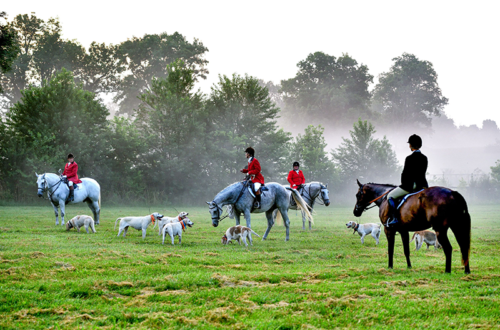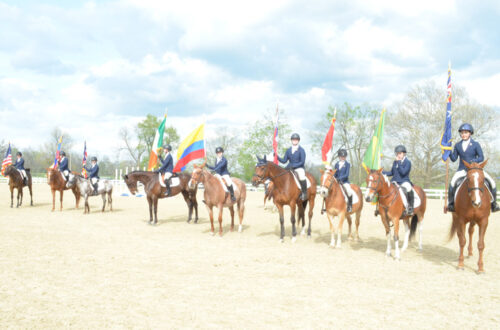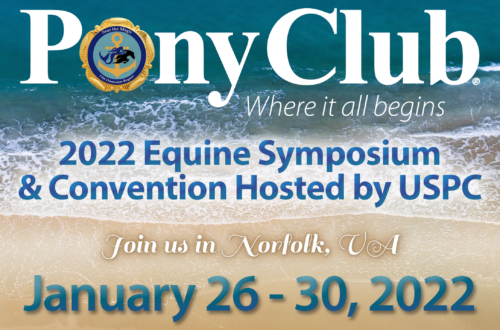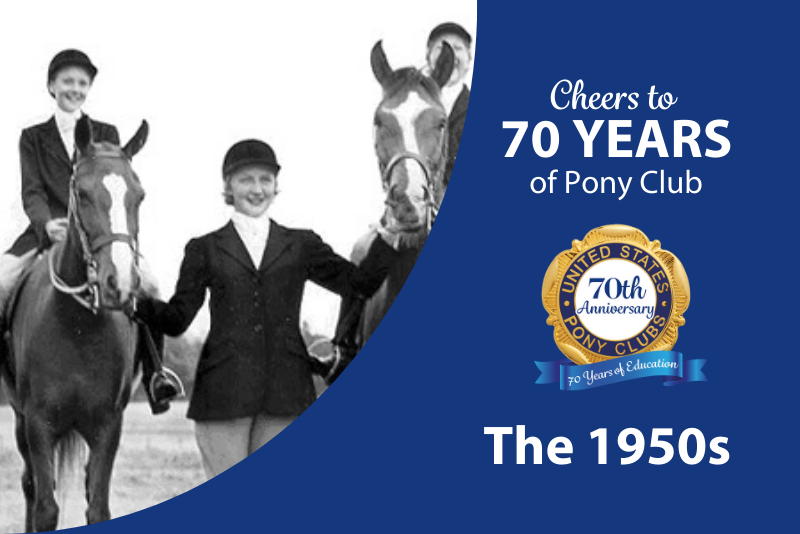
The Founding Fifties for the United States Pony Clubs
Adapted from “A Story to Tell, The United States Pony Clubs, Inc. 1954–2004”
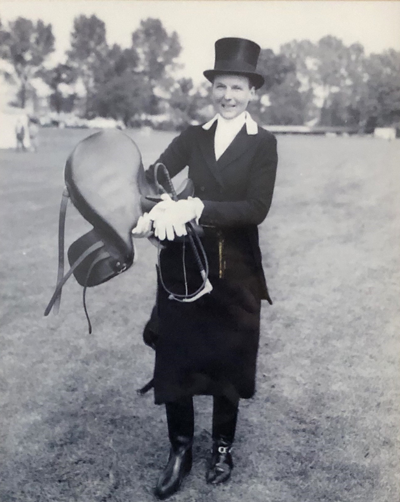
Louise Lott Bedford was worried about the future. She and her husband, Dean, loved horses, loved to foxhunt, and loved children. As she looked across their rolling Maryland landscape during the Maryland Hunt Cup races, she saw accomplished, well-groomed veteran riders and their mounts.
However, Louise Bedford also saw children riding ponies and horses of all sizes and breeds, often ill-matched to their stature, and not all properly trained. She saw trouble brewing for the sport and lifestyle she loved. So, she decided to do something about it.
Before The United States Pony Clubs, Inc. existed, there were local Pony Clubs, some dating from the mid-1930s. Primarily located in the northeastern part of the United States, these were branches of the British Pony Club, which was founded in 1929. (At that time, the term “pony” was used to describe the mount of any youth equestrian, regardless of its size.) This affiliation was interrupted by the difficult World War II years, and after that, the British presence in Pony Clubs within the United States dissolved. However, the inspiration remained.
Vision for a New Organization
On a spring day in 1953, the Bedfords met with two foxhunting friends. at the Bedford farm in the countryside of Fallston, Md.—Alexander MacKay-Smith, editor of The Chronicle of the Horse, and Colonel Howard Cleugh Fair, a Canadian-born businessman who raised Thoroughbreds on his Unionville, Penn., farm.
At their 1953 meeting, Louise Bedford convinced MacKay-Smith and Fair of the need to start an organization then and there. The quartet pledged to build a consensus of stakeholders to form a viable national organization. Together they pledged to gather a group of the most influential equestrians by the fall.
Finding themselves in total agreement, the founding four determined to expand their circle and agreed to form a United States Pony Clubs Temporary Advisory Committee, of which Louise Bedford served as chair. Its task: organizing a meeting to start a formal professional association of like-minded people.
At 5 p.m. Sunday, November 8, 1953, 23 interested people joined the Bedfords at their New York City apartment on 54th Street to authorize formation of the United States Pony Clubs. Given the groundwork done by the four founders, the meeting’s outcome was a clear directive: The Temporary Advisory Committee, still led by Louise Bedford, would take the necessary steps to form the organization.
They needed nuts and bolts to make the organization go. First, Louise Bedford turned to Boston lawyer and old friend W. Sidney Felton to draw up a constitution and bylaws for the club. As chairman of the bylaws committee, Felton drew up on his legal experience to produce a governing document. Felton also applied for and was granted 501(c)(3) not-for-profit charitable organization status with the Internal Revenue Service.
On the crisp New England morning of Wednesday, February 24, 1954, eight individuals, designated as incorporators by the Temporary Advisory Committee, signed the Articles of Incorporation. The United States Pony Clubs, Inc. was born!
Louise Bedford became the first USPC President; George Cole Scott, Vice President; and MacKay-Smith and Fair joined the Executive Committee. Other first-elected officers included: Joseph J. Jones, Nathaniel T. Clark, W. Sidney Felton, Constance Morse Fiske, Mary P. Grew, Lydia L. Hall, C. G. Rice, and Millicent Tuckerman.
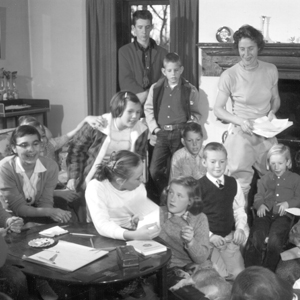
At the start, club registration was $25 annually; the member initiation fee was $0.50; and the individual annual dues were $5.
By the end of 1954, 22 member clubs in seven regions were serving an increasingly interested group of young riders.
From the start, USPC members had a close relationship with foxhunting, as many of the founders enjoyed and participated in hunts. The Masters of Foxhounds Association of North America (MFHA), the professional organization devoted to the sport, saw the formation of the USPC as beneficial to their own organization.
The USPC’s first annual meeting convened on Saturday morning, January 29, 1955, in the appropriately named “Masters of Foxhounds Association” Room at New York City’s Knickerbocker Club. The USPC gathering took place concurrently with the annual MFHA gathering.
Growth and Expansion
Fair announced that he would host the inaugural USPC Rally at his 300-acre Unionville, Penn. farm, Foxhill, on June 19 –21, 1955. To help organize and promote the event, Fair encouraged the board and members to elect Alice Sherburne Reidy to serve as Assistant Secretary.
Thirteen teams showed up at Fair’s farm in June for the inaugural USPC Rally, where sportsmanship was emphasized over competition.
Acknowledging their historical participation in this first event, team trophies were ceremonially awarded to the Radnor Hunt Pony Club as the B Team champion and to Mr. Stewart’s Cheshire Foxhounds Pony Club as the C Team champion.
By the end of 1955, 38 clubs in nine regions served 1,953 members.
By the end of 1957, USPC boasted 64 clubs serving more than 3,000 members. In 1958, Dean Bedford organized the Prince Philip Cup Mounted Games competition, modeled after a similar Mounted Games event in England.
Also that year, USPC chose blue and white as the official Pony Club colors, in time for the Prince Philip Cup competition ribbons and awards in 1959.
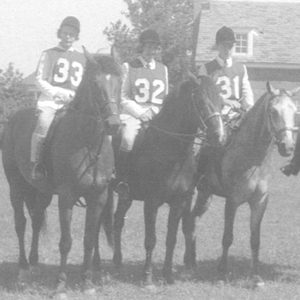
The national rallies continued to improve and attract a larger attendance. The 1956 rally took place at Elkridge-Harford Pony Club in Monkton, Md., and the 1957 rally was held at the Foxcroft School in Middleburg, Va. When the fourth rally concluded in 1958 at Wayne, Ill., organizers determined it was time to write and disseminate “The Guide to Rules for Rallies,” codifying the events and emphasizing the importance of “team-spirited and team competition” over individual accomplishments. Picnics, lectures, and certification tests joined the mix.
By the end of the 1950s, Fair completed his time over several terms as USPC president.
The founding clubs formed in 1954 and January 1955, which included:
- Baltimore-Harford County Pony Club (presently Elkridge-Harford Pony Club)
- Blue Ridge Hunt Pony Club
- Deep Run Hunt Pony Club
- Fairfield County Hunt Pony Club
- Lance and Bridle Pony Club
- Middle Tennessee Pony Club
- Millbrook Hunt Pony Club
- Norfolk Hunt Pony Club
- Old Chatham Pony Club
- Radnor Hunt Pony Club
- Rappahannock Hunt Pony Club
- Wilton Pony Club
- Cecil County Pony Club
- North Shore Pony Club
- Rochester Pony Club
- Pickering Hunt Pony Club
- Rose Tree Pony Club
- Mr. Stewart’s Cheshire Foxhounds Pony Club
- Montgomery Pony Club
- Genesee Valley Pony Club
- Talbot County Pony Club
- Somerset Hills Pony Club
- Spring Valley Hunt Pony Club
- Wayne-Du Page Hunt Pony Club
USPC Presidents during the 1950s:
- Louise Lott Bedford
- Col. Howard C. Fair
History adapted from A Story to Tell, by Robert R. Morris (The Donning Company Publishers, 2004).
Support the Future of The United States Pony Clubs
In honor of USPC’s history, consider showing your support with a gift to the Annual Fund. A gift of any amount helps ensure the future of Pony Club’s mission for generations to come.
In addition, help us fundraise by starting a Facebook Fundraiser. All proceeds go towards the United States Pony Clubs Annual Fund.
To order the limited-edition USPC 70th Anniversary commemorative pin, visit https://shopponyclub.org/products/pin-70th-anniversary



